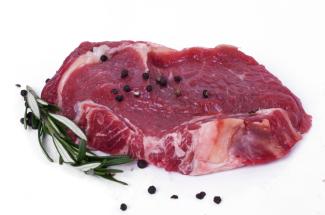
Eliminating joint pain naturally involves making lifestyle changes, incorporating specific foods and supplements, and practicing exercises and techniques that can help reduce inflammation, improve joint health, and manage pain. It's important to note that if you have severe or chronic joint pain, it's advisable to consult with a healthcare professional for proper diagnosis and treatment. Here are some natural ways to alleviate joint pain:
- Maintain a Healthy Diet:
- Anti-inflammatory foods: Include foods rich in omega-3 fatty acids (fatty fish like salmon, walnuts, flaxseeds), antioxidants (berries, green tea), and turmeric.
- Avoid inflammatory foods: Limit or avoid processed foods, sugary beverages, and trans fats.
- Maintain a healthy weight: Excess weight can put extra stress on your joints, especially the knees and hips.
- Stay Hydrated:
- Proper hydration helps lubricate the joints. Drink enough water throughout the day.
- Exercise:
- Low-impact activities: Engage in exercises like swimming, cycling, and walking, which are easier on the joints.
- Strength training: Building muscle around your joints can provide support and reduce joint stress.
- Range-of-motion exercises: Gentle stretching can improve joint flexibility.
- Hot and Cold Therapy:
- Heat: Apply a warm compress or take a warm bath to relax the muscles and reduce stiffness.
- Cold: Use an ice pack to reduce inflammation and numb the area if the joint is swollen.
- Herbal Supplements:
- Some herbal supplements like ginger, boswellia, and devil's claw have anti-inflammatory properties and may help with joint pain.
- Maintain a Healthy Lifestyle:
- Get enough sleep to allow your body to heal and repair.
- Manage stress, as chronic stress can exacerbate inflammation and pain.
- Avoid smoking and limit alcohol consumption, as both can contribute to inflammation.
- Use Joint Support Aids:
- Braces and splints can provide extra support to the affected joint.
- Shoe inserts can help with foot and ankle joint pain.
- Natural Topical Remedies:
- Topical creams or ointments containing capsaicin, arnica, or menthol can provide temporary relief from joint pain.
- Adequate Omega-3 Fatty Acids:
- Consider fish oil supplements (with your doctor's approval) to increase your intake of omega-3 fatty acids.
- Physical Therapy:
- A physical therapist can design a tailored exercise program to improve joint mobility and strength.
- Acupuncture and Acupressure:
- These alternative therapies may help alleviate joint pain and improve circulation.
- Mind-Body Techniques:
- Practices like yoga, tai chi, and meditation can improve flexibility, reduce stress, and help manage pain.
Remember that natural remedies may take time to show results, and what works for one person may not work for another. It's important to consult with a healthcare professional for personalized advice, especially if your joint pain is severe or chronic. They can provide guidance and recommend suitable treatments or therapies to address your specific condition.
Which plants to use for pain relief?
Several plants are known for their potential pain-relieving properties. It's important to note that while some people find relief from using these plants, they may not be as effective as pharmaceutical medications for managing severe or chronic pain. Always consult with a healthcare professional before using any plant-based remedies, especially if you have a medical condition or are taking other medications. Here are some plants commonly used for pain relief:
- Willow Bark: Willow bark contains salicin, which is similar to the active ingredient in aspirin. It has been used for centuries to alleviate pain and reduce inflammation.
- Turmeric: Curcumin, the active compound in turmeric, has anti-inflammatory and analgesic properties. It's often used to relieve pain associated with conditions like arthritis.
- Ginger: Ginger has anti-inflammatory and analgesic properties and can be used to relieve pain, particularly for joint pain and muscle soreness.
- Cannabis: Cannabis, or marijuana, contains compounds like THC and CBD that have pain-relieving properties. It's commonly used for chronic pain conditions.
- Peppermint: Peppermint oil can be applied topically to relieve headaches, muscle pain, and sore joints. It has a cooling effect that can help with pain relief.
- Lavender: Lavender essential oil is known for its calming and pain-relieving properties. It can help reduce headaches and muscle tension when applied topically or inhaled.
- Capsaicin (Chili Peppers): Capsaicin is a compound found in chili peppers. When applied topically, it can help alleviate pain, particularly nerve pain associated with conditions like shingles or diabetic neuropathy.
- Arnica: Arnica is often used in topical creams and ointments to relieve muscle and joint pain. It's especially popular among athletes.
- Valerian: Valerian root can help with pain relief and muscle relaxation. It's commonly used to alleviate pain associated with tension and muscle cramps.
- Devil's Claw: Devil's claw is an African plant with anti-inflammatory properties. It's often used to relieve pain and inflammation associated with conditions like osteoarthritis.
- Boswellia (Frankincense): Boswellia extract contains compounds that have anti-inflammatory properties and can be used for pain relief, particularly in joint pain.
- Kratom: Kratom is a tropical plant that has been used traditionally in Southeast Asia for pain relief. It contains alkaloids that can have analgesic effects.
Please keep in mind that the effectiveness of these plants may vary from person to person, and their use should be approached with caution. Additionally, the safety and legality of some of these plants may be subject to regional or national regulations, so it's essential to research and consult with a healthcare professional before using them.






